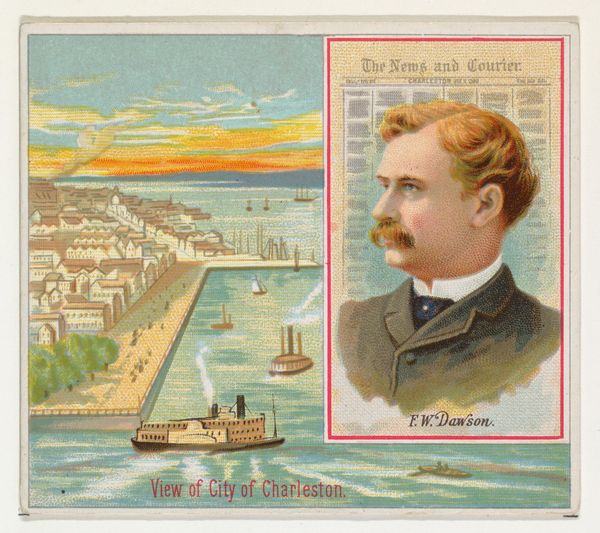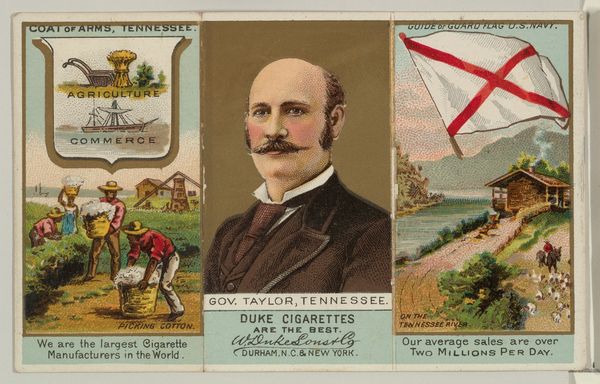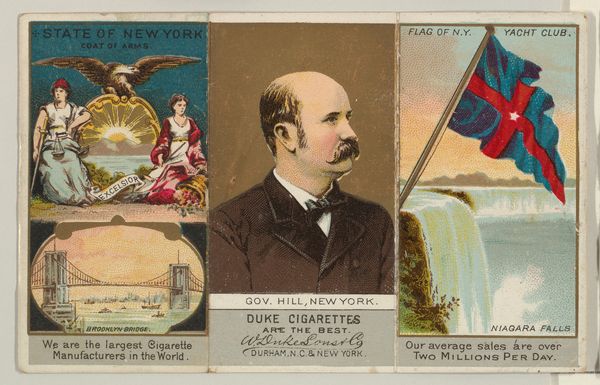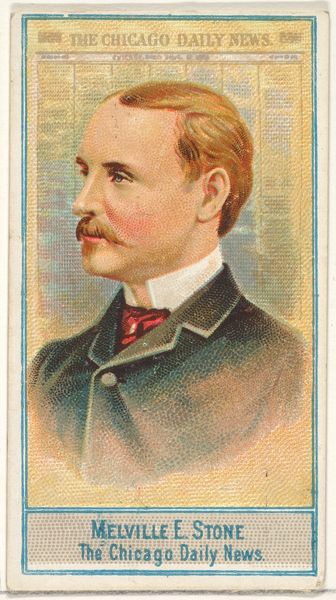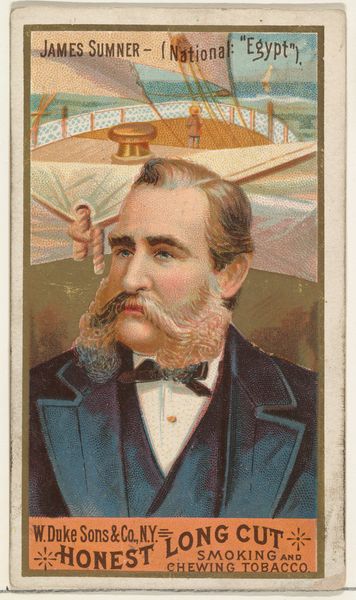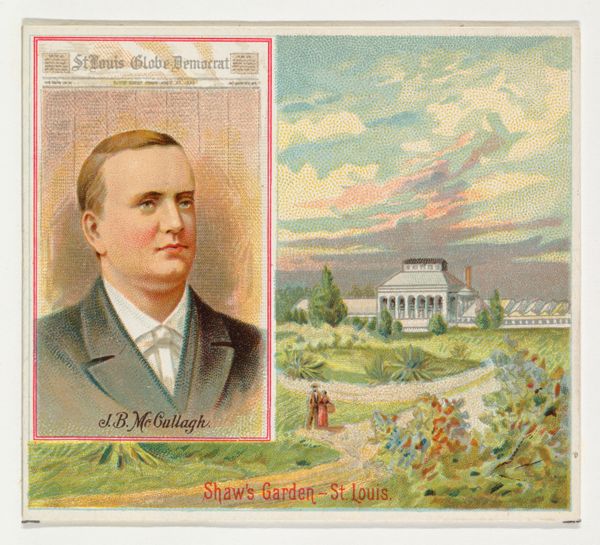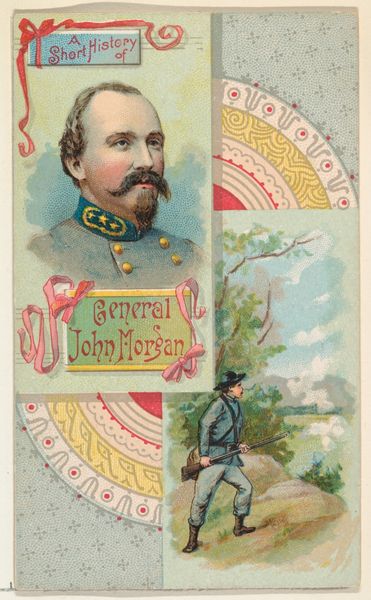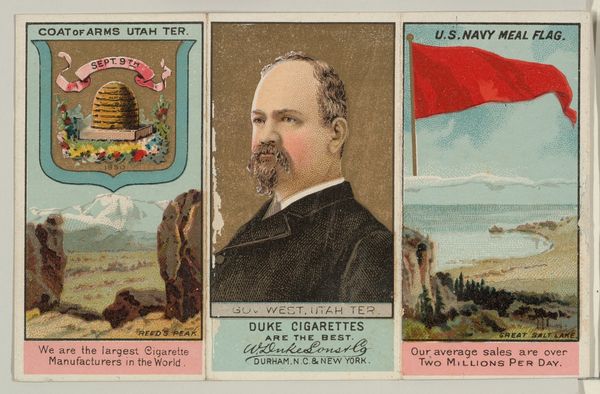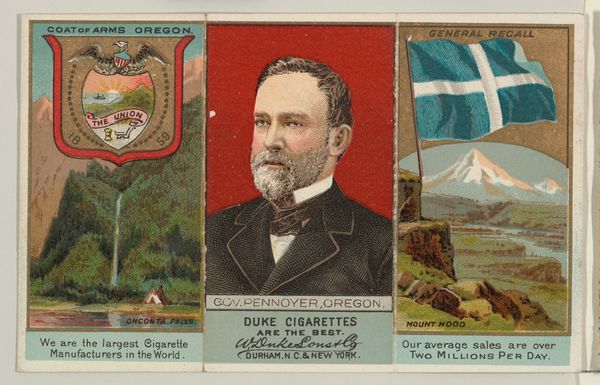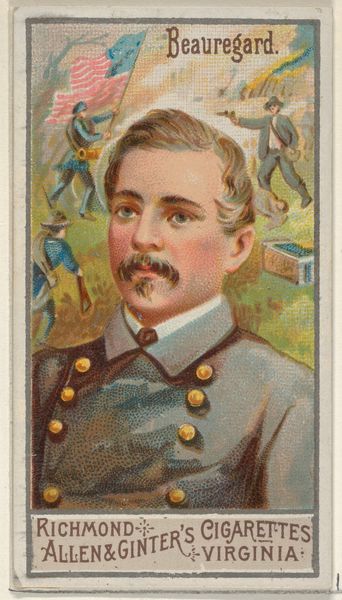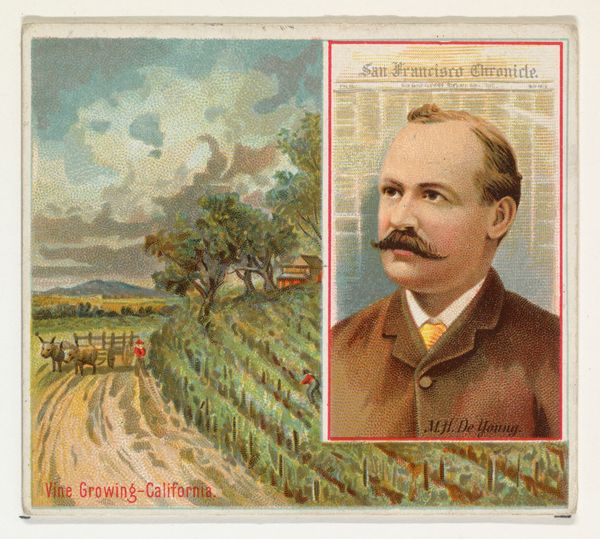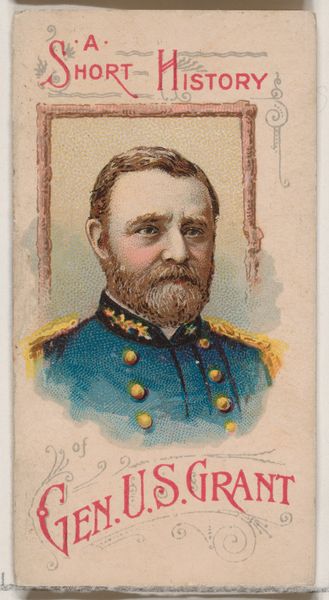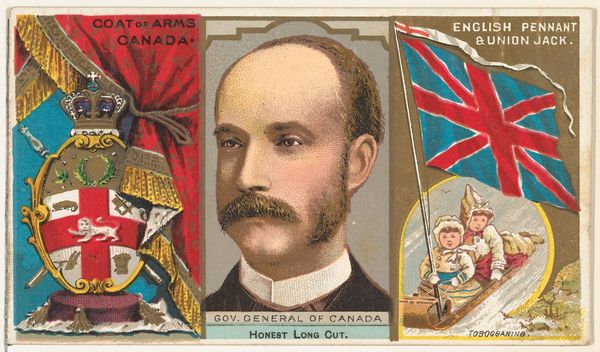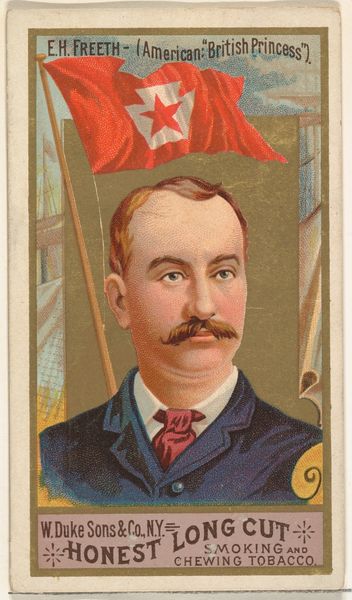
Melville E. Stone, The Chicago Daily News, from the American Editors series (N35) for Allen & Ginter Cigarettes 1887
0:00
0:00
Dimensions: Sheet: 2 7/8 x 3 1/4 in. (7.3 x 8.3 cm)
Copyright: Public Domain
Curator: Here we have Melville E. Stone, The Chicago Daily News, created in 1887 as part of the American Editors series for Allen & Ginter Cigarettes. This piece combines portraiture with a cityscape, a curious blend. What’s your initial take? Editor: It has this strangely detached quality, like two separate images forced together. There's Stone, sharply rendered, set against the dreamy backdrop of a harbor with rough seas. The contrast feels…unsettling. Curator: Precisely! These cards were designed to promote both prominent figures and the Allen & Ginter brand. The choice of editors highlights the growing influence of newspapers during this period. The intention was probably celebratory, linking progress with the city. Editor: But consider the narrative implied by that seascape. Is it a symbol of the turbulent era, or simply a romantic backdrop? It seems to juxtapose the controlled portrait with the unruly energy of industrializing Chicago. Curator: An insightful connection! The "American Editors" series visually codified power, placing these men in the public eye. Note how the card flattens the pictorial space, mimicking the visual language of ukiyo-e prints, indicating cultural fascinations of the era. Editor: Yes, but even with that flattening, I keep returning to the harbor. It almost swallows up Stone, implying the power of industry might be bigger than the individual, maybe even overwhelming him. Are we meant to consider that this period of innovation might lead to moral compromise? Curator: The context of Allen & Ginter cigarettes provides another angle. Tobacco cards were inserted into cigarette packs to stiffen them and advertise to male smokers. They offer us a glimpse into the era's consumer culture and advertising strategies. Editor: So the image, with its contrasting halves, becomes a sort of…capitalist statement. On one side we have this idealized captain of industry, Stone, while the seascape points towards a possibly harsher truth behind that image. Curator: Well said! These seemingly simple promotional items become potent documents, offering insights into social hierarchies and cultural values of the time. Editor: Right, the casual integration of a portrait like Stone's into an object promoting addiction raises profound ethical questions. Curator: Absolutely. Examining this small card reminds us to look closely at even the most ephemeral artifacts. Editor: It reminds us of art's unique ability to unveil the social contradictions of the era, doesn't it? A moment encapsulated.
Comments
No comments
Be the first to comment and join the conversation on the ultimate creative platform.
